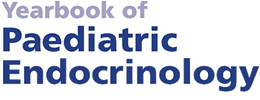ESPEYB15 3 Thyroid Post-Fukushima thyroid cancer risk (1 abstracts)
3.15 Japanese food data challenge the claimed link between Fukushima’s releases and recently observed thyroid cancer increase in Japan
Steinhauser G , Chavez-Ortega M & Vahlbruch JW
Leibniz Universität Hannover, Institute of Radioecology and Radiation Protection, Hannover, Germany
To read the full abstract: Sci Rep 2017;7:10722
This paper elegantly describes how precise quantification of ingested radioactive iodine in the Japanese population was measured after the Fukushima catastrophe. The mainstay of such a detailed analysis by the Ministry of Health, Labor and Welfare was the sequential quantification and documentation of all sources of radioactive iodine ingestion in the air, and in the complete food chain in all relevant geographic regions starting within one week after the Fukushima nuclear fallout. As the food chain is the most important source of radioactive iodine over months after a nuclear emergency, the authors gathered all available data from pre- and post-market specimens of vegetables (above ground and below ground), fruits and berries, mushrooms, algae, fishery products, cattle milk and dairy products from the databases of the Ministry of Health, Labor and Welfare to get a comprehensive picture of average radioactive concentrations over time for the Japanese population. The authors then modelled, in conservative worst-case scenarios, exposure dose estimates for all age groups including infants, 1-6 year old children, 7-14 years old children, 15-19 year old adolescents and for each decade of adult life. Their conclusions are highly reassuring; however, the future will tell if these models were precise enough to realistically predict thyroid cancer risks.



